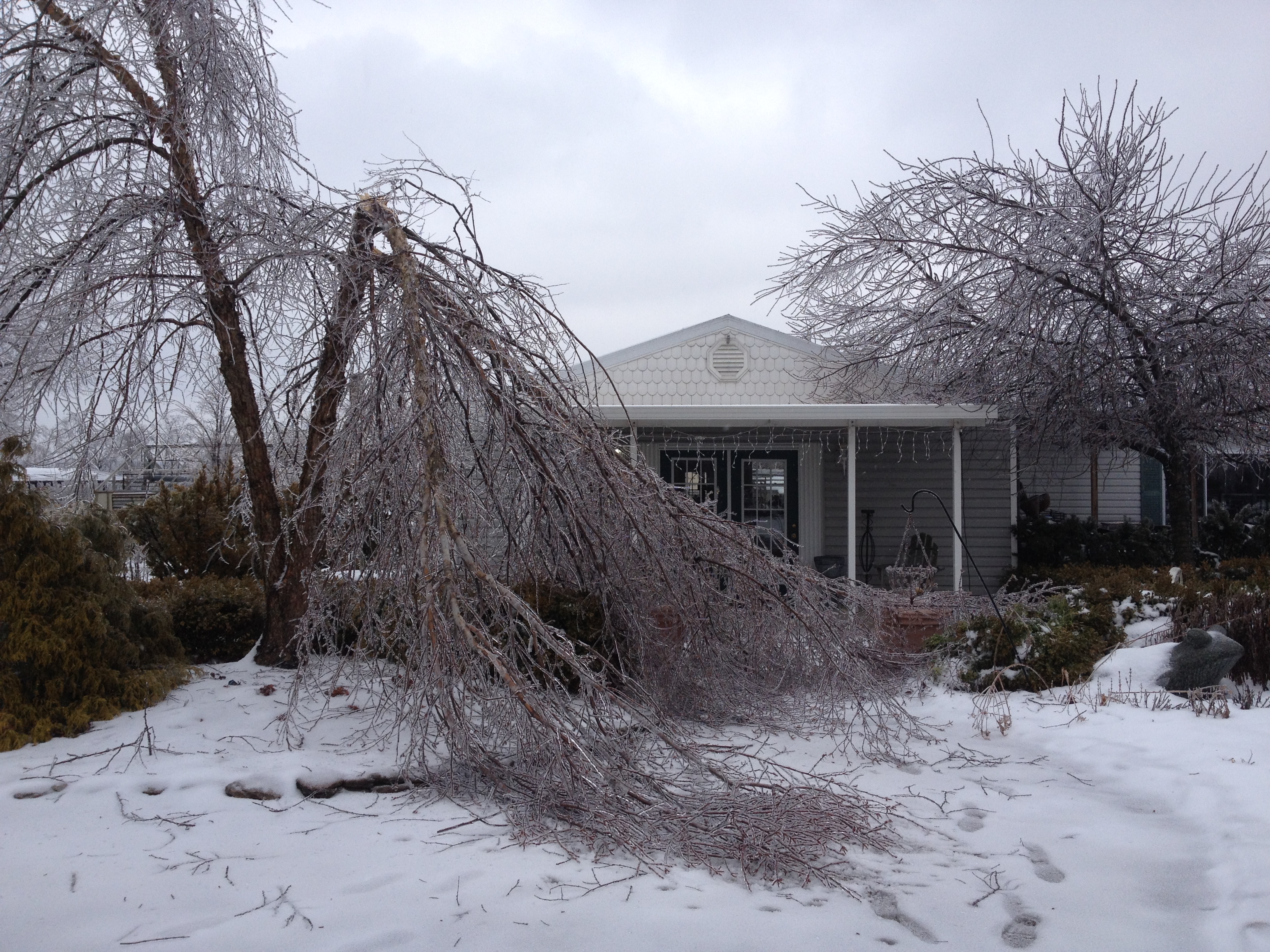I just remembered that I some times take for granted that people know what to do with their landscape plants when they get damaged or weighed down by snow or ice. The answer is absolutely nothing. Yes, that is right, nothing. Well at least not until it warms up and they thaw out. This is a hard thing for us to do because when we see one of our cherished trees or shrubs bent over, branches weighed down with ice, it is natural to want to relieve the plant of this problem. Counterintuitive as it may be, that is often the worst thing you can do. While the branches are covered with ice or snow, they are very brittle and damage easily. The most obvious damage is complete breakage but there is also damage that can occur on the cellular level. It is better to let nature run its course, letting all branches and limbs thaw out completely. After the thaw, the branches will usually spring back into place; this process may take awhile but it occurs most of the time.
If complete breakage has occurred, you will still first want to let the plant thaw out completely, then come back and make a clean-cut. It is almost guaranteed that the break will not be clean and will be a splintered break. The tree will have a difficult time healing and the wound can open it to other pest or disease problems later on. Use a sharp hand saw or chain saw, make a clean cut back to the next branch junction and branch collar. The branch collar is the raised part at the base of a branch where it connects to the trunk of the tree or a branch. You do not want to cut past this, but just in front of it. In other words, don’t leave big stubs by just cutting the branch in the middle or not far enough back. The tree cannot heal properly from this kind of pruning.
It is interesting to see the difference in how various plants react to these kinds of winter weather events. Obviously the trees and shrubs from more hardier clients have adapted to this kind of event and they don’t exhibit as much if any breakage as some of the plants from less harsh winter areas.

Recent Comments